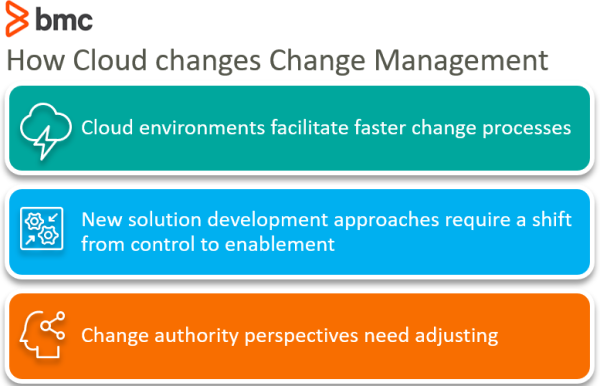
researchHQ’s Key Takeaways:
- Change management is the process responsible for controlling the lifecycle of all changes, enabling organisations to implement necessary changes while avoiding major disruption to IT services.
- The natural agility of cloud environments facilitates faster change processes due to factors such as autoscaling and the on-demand availability of components and licences.
- Cloud management needs to shift from a control perspective to one of enablement, focusing on the development of appropriate change models.
- Product and infrastructure teams should be allowed greater autonomy in prioritizing changes, allowing higher-level change authorities to focus on managing overall change visibility and any major incidents that arise.
Cloud technologies are now firmly established as the norm for enterprise IT. In fact, most organizations are now tying digital transformation strategies firmly to a cloud-first approach. According to Gartner, growth in enterprise IT spending for cloud-based offerings will be faster than non-cloud spending through 2022—what they term the “cloud shift”. And the drive is not just because of cost savings from a CapEx perspective, but rather value from speed in delivery of new or changed products and services, in line with the ever-changing customer needs and market dynamics.
Managing these changes to service offerings in the cloud age needs fresh thinking and a break from traditional change management. ITIL® 4 defines a change as:
The addition, modification, or removal of anything that could have a direct or indirect effect on services
Change management, then, is the process responsible for controlling the lifecycle of all changes, enabling beneficial changes to be made with minimum disruption to IT services.
Migrating to the cloud does not mean we are immune to incidents that stem from changes—you only have to look as far as Google and Facebook to see that. Instead, practices that support cloud change management should evolve appropriately to take advantage of cloud benefits. Let’s look at three considerations of change management in the cloud.

1. Cloud environments facilitate faster change processes
Cloud environments are designed for agility—facilitating speed when it comes to change. Components and licenses are available on demand. Apart from financial constraints, there is no delay that determines when you can spin up an environment with the requisite capacity and software you need for your solution. This means that changes can be made using a few clicks and operations, taking minutes rather than days. This isn’t limited to setting up new environments; replicating or rolling back changes across multiple environments is significantly easier and quicker.
Traditional IT environments require a considerable amount of planning for capacity upgrades. This is not true of cloud environments, where autoscaling ensures capacity can be upgraded automatically, on demand.
Cloud environments also provide or facilitate the use of a variety of automation, integration, and deployment tools that allow the organization to make small, frequent changes that reduce business risk and introduce business value at an increased rate. These include solutions such as:
- Git
- Jenkins
- Chef
- Puppet
Therefore, the cloud reduces the necessary change management effort of understanding and preparing infrastructure for required changes. Also, the automation and high velocity that characterizes changes in the cloud means that routing of changes through a centralized repository—for logging all changes for categorization, prioritization and approval—takes a back seat due to the bottleneck it could introduce.
2. New solution development approaches require a shift from control to enablement
Because approaches such as Agile and DevOps are now the mainstay of solution development in the cloud, change management needs to move from a control perspective to one of enablement. These new approaches are self-managed in nature; as such, they repel any attempts to impose bureaucratic control—a hallmark of change management. These approaches prefer iterative and regular deployment of new features and modifications, which can be delivered through continuous integration, delivery, and deployment processes. (No wonder the ITIL 4 publication quickly evolved the name of the change management practice from change control to change enablement.)






